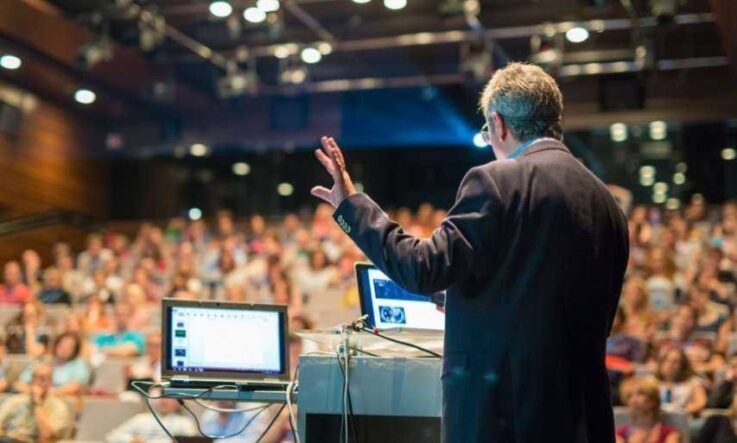Hello, thank you for downloading this podcast from Teacher magazine – I'm Jo Earp and you're listening to Episode 16 of The Research Files. This month, we find out about Harvard University's Best Foot Forward project, which is exploring the effectiveness of videoing lessons as a feedback tool in teacher observations. The research team said there was an initial concern that teachers taking part in the study might resist being filmed. In actual fact, those who taped themselves and submitted the lessons for evaluation told the team they found the process more fair and useful. I spoke to lead researcher, Professor Tom Kane, about the project's initial findings.
Jo Earp: Now, we know the importance of feedback in the professional development of teachers. Traditionally of course, observation involves usually someone from a leadership group going into a class and observing. Your particular project is looking at whether technology can play more of a role here isn't it?
Tom Kane: Most teachers who are struggling, are struggling not because of things that they're noticing and ignoring, but they're struggling because of things that they're not noticing. And, just having external observers come into the classroom and take notes is not going to help any teacher notice things that they didn't notice in real time.
... Video is much more useful. People might disagree in the interpretation of what's gone on in the class, but with video there won't be any disagreement about just the facts of what happened. ... The question is – how can you do that in a way that is not seen as sort of 'spying' or an invasion of privacy?
That's why we call the project the Best Foot Forward project, because we give teachers cameras and invite them to put their best foot forward – to record as many lessons as they want. And, when they've got two or three lessons that they're proud of, we make it easy for them to submit them to their principal and then have their principal, or whoever, whether it's a group of peers watching the videos, observe them during quieter times of the day or week.
By the way, that's another advantage, it's not just an advantage for the teacher himself or herself getting a chance to see themselves teach, it also allows the observer to do those observations during times of the week when they're not scrambling, it allows them to time shift. Something like 60 per cent of the principals in our study did their video watching either before school, or after school, during the lunch hour or on weekends, so during non-instructional times.
JE: Now, you've just published a report on findings from the first year (links available at the foot of this article), and that was this process you've just described there with teachers being given the cameras, they were self videoing and then submitting – picking out the best practice if you like.
I'm sure that some people listening will be thinking 'Hang on a minute, the people involved are just going to be submitting things that are perfect and you'll never pick up on anything going wrong'. But, you actually found some really interesting results and it wasn't like that at all, was it?
TK: Right. When we first were describing this project to principals, we often heard similar concerns that if they gave up the element of surprise then they might not 'catch' teachers making mistakes in the class. It turns out, I don't think the element of surprise is worth very much in terms of identifying teachers that are needing help.
... We took sets of these videos and had them scored by external observers and we didn't tell them which of these videos had been submitted and which hadn't. We were able to ask: How was a teacher's score in the video that he or she submitted related to their score on the videos that they didn't submit? What we found was two things.
One, that, as you predicted, when you give teachers a chance to submit lessons they submit better than their average lesson. So, the average score of the submitted videos was higher than the average score of the unsubmitted videos. By the way, that in itself is a good thing because it implies that teachers know what the good lessons are.
But, the second thing we found was that the correlation between a teacher's submitted lesson and their unsubmitted lessons was very high - about .75, which is just saying that the best lessons from the best teachers are that much better than the best lessons from the weakest teachers.
[In] turning over control of the video collection process to teachers, you don't forfeit your opportunity to identify the teachers who are struggling. You keep the ability to recognise the teachers who are struggling. But, in return for making that trade-off, you end up getting teachers observing themselves much more often, because rather than getting observed two or three times, in our study teachers collected 13 lessons of videos over the course of a single year ...
JE: Did you find that it made them more at ease with this whole process - actually, I think the barriers came down didn't they? I read that you said that actually the filming and the sharing process made them 'true collaborators in their own PD'.
TK: Right, it made them more willing to actually be observed by others than if the observations all had to be in person. I mentioned earlier, people said well 'Do you really want to give up the element of surprise?'. Another concern people raised early was 'Won't the cameras be distracting?'.
Well, they were a little distracting but not nearly as distracting as having another adult standing in the back of the classroom ...
JE: Finally then, there are some encouraging things coming out of the first year of this project. I understand the next step is to look at impact on student performance?
TK: Our goal, ultimately, is to raise student achievement. It sounds simple but the fact is we're not going to see dramatically different student outcomes without different teaching. That's adult behaviour change – and we all know that adult behaviour change is hard and it doesn't happen without feedback.
Just imagine trying to launch a Weight Watchers program before the invention of the bathroom scale or the bathroom mirror. It would just be a bunch of conversation, without any sort of systematic way of judging whether people are sticking to their commitments. It's very hard to sustain adult behaviour change.
What this is, is creating the 'bathroom mirror' to allow teachers to begin to change their practice. That analogy is actually pretty good because it's not, in most of these videos, people spying on you. The only people seeing most of the videos that were collected were the teacher themselves because most were videos that they ended up never submitting. But, by watching themselves in these videos, teachers often reported to us that they saw things that they didn't realise they were doing in real time. And the video, again, just let them notice things that they weren't noticing at the moment.
JE: Well, it would be great to catch up with you again at the conclusion of the project to see how things pan out. In the meantime, Professor Tom Kane, thanks very much for sharing your work with The Research Files.
TK: Thank you Jo.
You've been listening to an episode of The Research Files, from Teacher magazine. To download all of our podcasts for free, visit acer.ac/teacheritunes or www.soundcloud.com/teacher-acer. To find out more about the research discussed in this podcast, and to access the latest articles, videos and infographics visit www.teachermagazine.com.au
- To download the first year implementation report visit http://cepr.harvard.edu/best-foot-forward-project
- The project team at Harvard University's Center for Education Policy Research has also produced a Best Foot Forward Video Observation Toolkit which is free to download at http://cepr.harvard.edu/video-observation-toolkit
How often do you reflect on your own practice?
What methods do you use, and what follow-up action do you take?
As a school leader, or senior member of staff, how do you use feedback to improve teaching practice?



